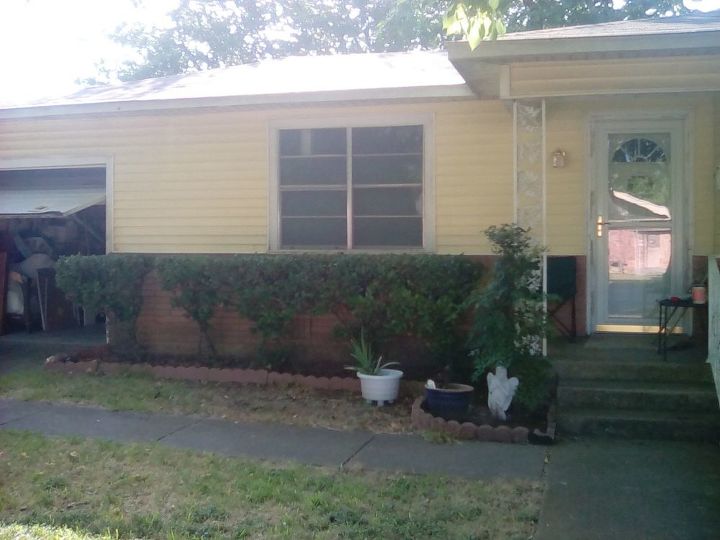How to make a Front porch
Related Discussions
How do I make a temporary wind shelter in my front porch of a rental ?
How to underpin a front porch?
I have an old farmhouse, and had used pvc lattice to underpin it 20 years ago. Now I am wanting a different look … I am a senior, so need to do this with expense a... See more
How do we build a cheap front porch for our new mobile home?
How can I make/install a splatter guard for screened in porch?
Rain, dust and dirt come in the bottom of our screened in porch. Any ideas of something I can put on the inside or outside of the screen to prevent this from happenin... See more
How do I enclose part of my porch to make a catio?
I want to close off part of my small front porch so my kitty has access to the outside. I would need a screen door and a new column. I don't have many tools, so the p... See more




My ex husband is doing something similar at his house. Take the bushes out then level the area. Then you will need to dig down to set the footing for the deck as you will want it to be level with the existing porch. Check local code, as if it rains a lot or snows where you live, the deeper go need to go for stability. Then you can lay your deck boards. See if these help.
https://homesteady.com/how-12228895-add-existing-porch-deck.html
https://www.diychatroom.com/f14/adding-deck-existing-concrete-porch-58276/
https://www.doityourself.com/stry/how-to-expand-a-porch
A deck can be built right over the top of the concrete porch. As far as it being covered, this is where it gets tricky. The roof over the porch would need to tie into the roof on the house. To do this a section of shingles and sheathing would have to be removed, and the joists for the patio would have to tie into the joists of the house. Then sheathing would be put back, and everything papered and shingled. This is not a DIY project.
ID use composite wood less maintenance. . And don't forget to slant the front down at a slight slant to stop water from flowing back against the house and to allow it to drain off IMHO, absolutely should be pitched. Also, floorboards should be run perpendicular to porch edge. Some folks say 1/4 inch per foot, but I think you can get away with half that for a covered porch if it is set carefully.
Why pitch?
1) Standing water=puddles, mildew, algae, and rot. Even synthetics get mildew and algae.
2) Standing water=ice (in some climates)
3) Any water that does not get pitched away lands closer to house, which can cause other problems.
4) If not purposely pitched away, it may wind up being pitched slightly towards the house, which can rot the house. Proper flashing can prevent, but why bother when you could have simply pitched it away in the first place.